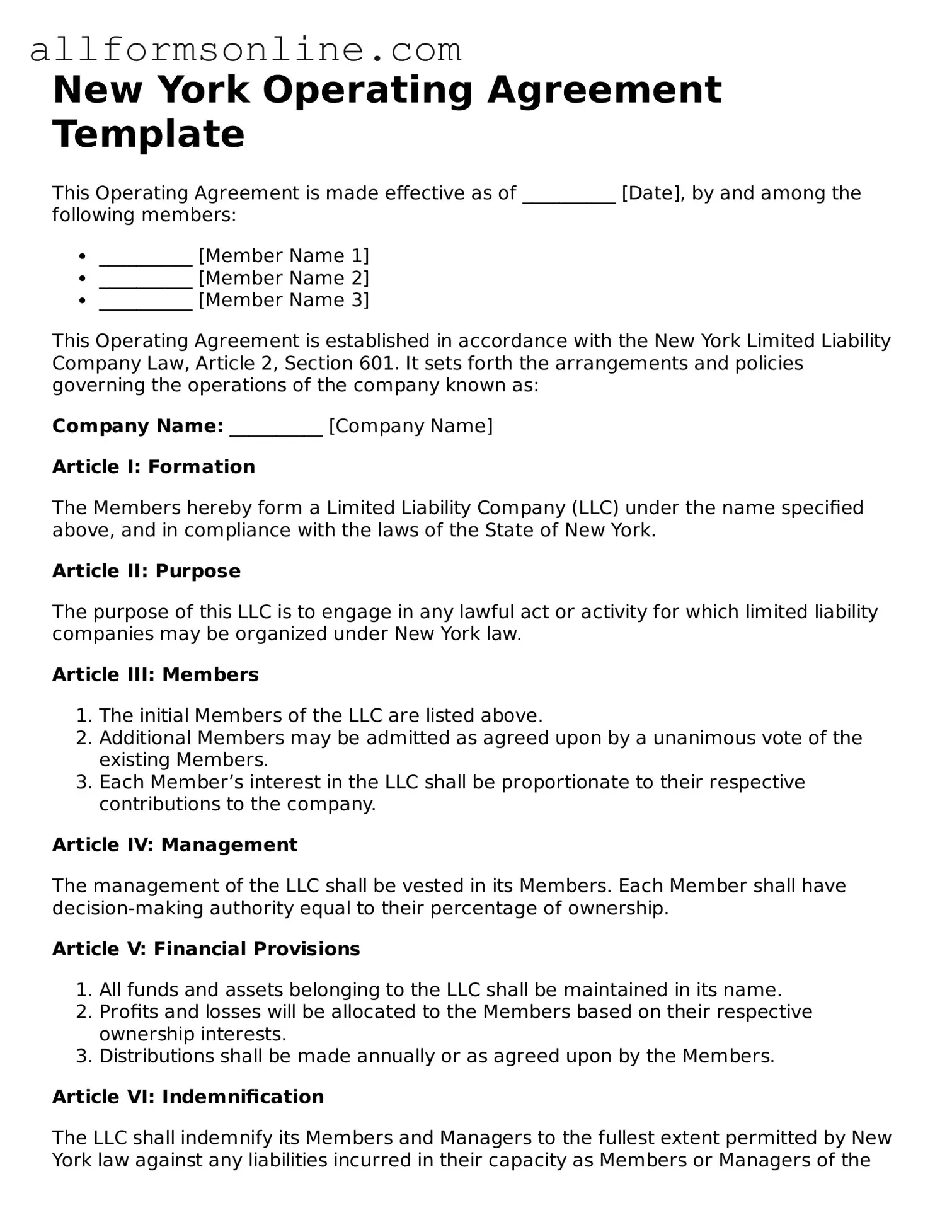What is a New York Operating Agreement?
A New York Operating Agreement is a legal document that outlines the ownership and operating procedures of a Limited Liability Company (LLC) in New York. This agreement serves as a blueprint for how the business will be managed, detailing the rights and responsibilities of its members.
Is an Operating Agreement required in New York?
While New York law does not mandate that LLCs have an Operating Agreement, it is highly recommended. Having this document helps prevent misunderstandings among members and provides clarity on how the business should operate. It can also protect members' personal assets in case of legal disputes.
Who should draft the Operating Agreement?
The Operating Agreement can be drafted by any member of the LLC, but it is often beneficial to consult with a legal professional. This ensures that the agreement complies with state laws and adequately addresses the specific needs of the business and its members.
What should be included in the Operating Agreement?
The Operating Agreement should include details such as the name and purpose of the LLC, the members' contributions, profit distribution, management structure, and procedures for adding or removing members. It may also cover dispute resolution methods and the process for dissolving the LLC.
Can the Operating Agreement be amended?
Yes, the Operating Agreement can be amended. Members can agree to changes as needed. It is important to document any amendments in writing and ensure that all members consent to the changes. This keeps the agreement current and reflective of the business’s needs.
What happens if there is no Operating Agreement?
If an LLC does not have an Operating Agreement, it will be governed by New York's default LLC laws. This may not align with the members' intentions and can lead to conflicts or confusion regarding management and profit distribution. It is advisable to create an Operating Agreement to avoid these issues.
How do I file the Operating Agreement?
The Operating Agreement does not need to be filed with the state. However, it should be kept on record with the LLC’s other important documents. Each member should have a copy for their reference, ensuring that everyone is aware of the terms outlined in the agreement.
